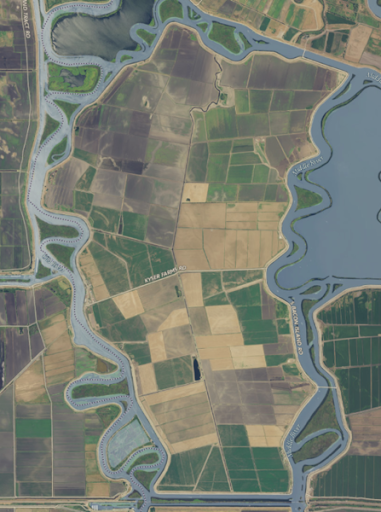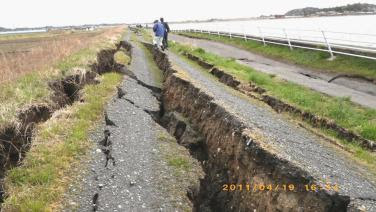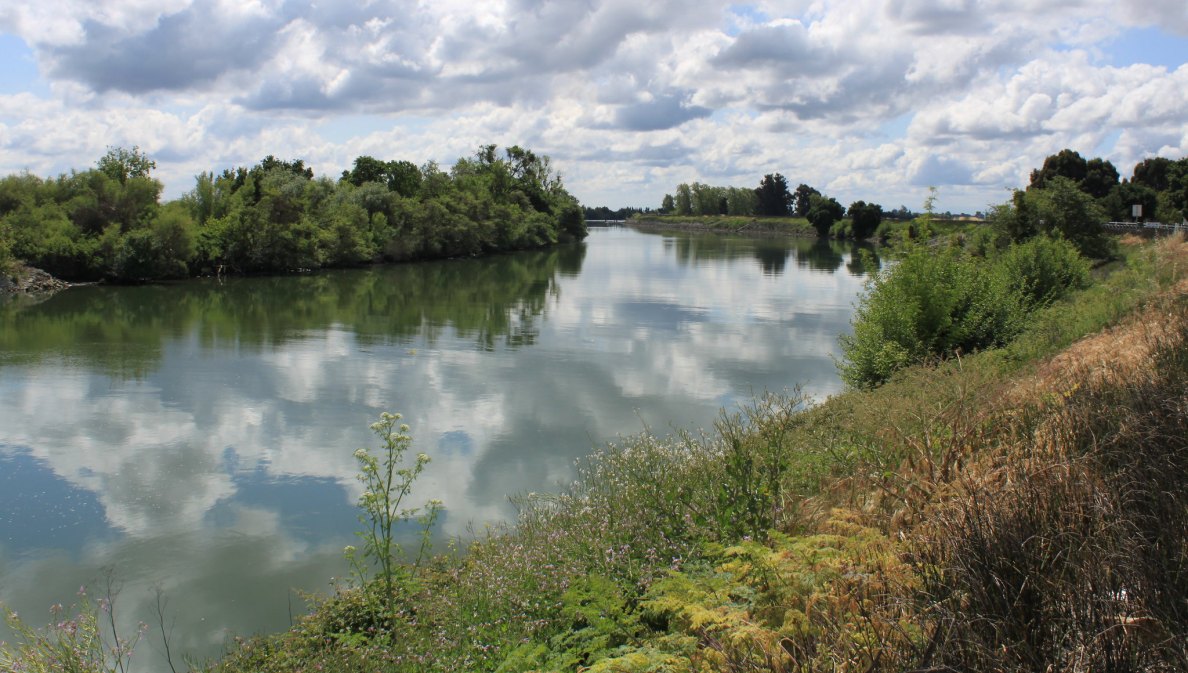Written by Robin Meadows

Like other islands in the central Sacramento-San Joaquin Delta, Bacon Island has subsided below sea level and is encircled by a levee to keep the water out. “All it takes is one bad spot in a levee to flood an island,” explains UCLA engineer Scott Brandenberg, lead on an ongoing study assessing risk in Delta levees. “This is a really hard problem to solve for sudden shocks like floods and earthquakes.”
The Bay Area has seven significant faults, and an earthquake could potentially flood a number of islands at the same time. This would draw salty water into the Delta from the San Francisco Bay, contaminating the fresh water supply for two-thirds of Californians as well as millions of acres of farmland.
“I’ve seen levees that survived earthquake shaking in perfect condition, and other levees that liquefied and sunk into the ground,” Brandenberg says, adding that there are many more cases where levees do better than expected. This underscores the importance of validating levee risk models with real-world observations.
The last Delta Risk Management Strategy is now a decade old, and the field has advanced considerably since then. So, with funding from the Delta Stewardship Council, Brandenberg has teamed up with 11 colleagues to demonstrate the latest in levee risk analysis, using the 5,400-acre Bacon Island as a case study.
Delta levees haven’t yet been shaken by an earthquake strong enough to damage them, but levees in Japan have. Brandenberg worked with Japanese researchers in the 2010s to develop the first model of levee fragility to earthquakes based on field data, including how high river water was outside a levee as well as how high groundwater was within a levee. Initially, this model wasn’t a perfect fit with the Delta. In contrast to levees on the Japanese mainland, levees in the Delta contain peat soil, which comes from decaying wetland plants and is soft and crumbly. To make the fragility model a better fit with the Delta, the researchers extended their work to peat levees on the Japanese island of Hokkaido. Not surprisingly, the results showed that “levees founded on peat had even more damage,” Brandenberg says.

In their new Delta levee risk assessment, Brandenberg and his team combined the earthquake fragility model based on field data from Japan with recent data specific to Delta levees. The new assessment includes two additional factors: sea level rise, which increases the stress of water pushing on the outside of Delta levees; and further subsidence of the islands’ peat soils, which make the levees more vulnerable to stress.
Data specific to Delta levees includes soil samples as well as images of their internal structure. While these levees were originally hand built from peat beginning in the mid-1800s, they have been bolstered extensively since then. “The levees are not uniform from top to bottom, or along their length,” says Brandenberg, who first heard about Delta levee issues as a graduate student at UC Davis.
The team imaged Bacon Island’s 20 kilometer-long levee with geophones, devices that measure vibrations through the ground. The system works like this: as a truck drags an array of geophones along the top of the levee, researchers tap it with a hammer. The geophones then record how fast the vibrations from the hammer travel though the various parts of the levee. “It gives an image of the inside of the levee, much like an ultrasound,” Brandenberg says. Delayed by pandemic precautions that brought field work to a halt, this part of the project was recently completed.
The new Delta levee risk assessment estimates the likelihood that Bacon Island’s levee will fail due to floods and earthquakes in a given year. Applying this method will help prioritize levee investments and address risks throughout the Delta. “By better understanding how the levees will respond to earthquake shaking, people can make improved decisions to allow for more reliable and sustainable water deliveries,” says California Department of Water Resources engineer Mike Driller.
Produced by Estuary News Group



